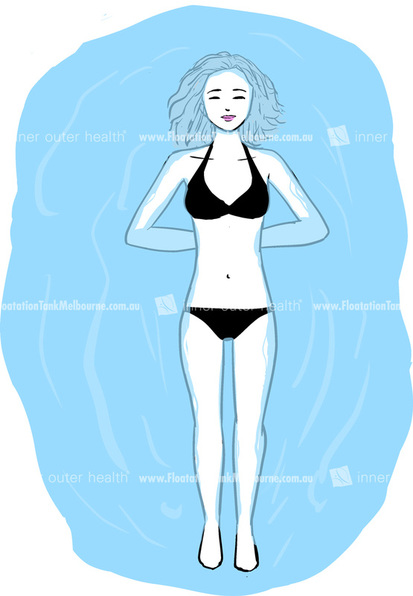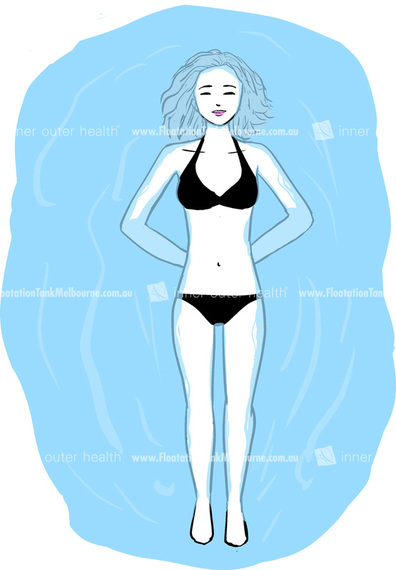Another way you can position yourself while you float is to join your hands behind your back just above your buttocks, either keeping your palms open, facing and touching each other, or by interlocking your fingers as shown in position A.
Another option is to try to gradually move your arms from the sides of your body, moving slowly toward each other, until they meet behind your lower part of you upper back and bring your arms up until your forearms overlap, or where a females bra strap would be. As you overlap your forearms, use your hand to grip hold of the other arm for extra support. This is shown below in position B. However, position B might be a little difficult to begin with. If you cannot reach this far, or find it too uncomfortable with this, try out position A and lower your arms.
Ideally you want to gently bring your shoulders back without force and allow the buoyancy of the water do the rest. If you trust the process and give yourself permission to let go your body will just follow what is best for you at the time of your float.
This position may help:
- Stretch out your chest
- Reduce the occurrence of rounded shoulders
- Open up your chest and lungs for fuller breaths
- Stretch out your forearm
- Improve your posture
You may be wondering how long to hold this position for. Subject to your flexibility or floating frequency, you may be able to hold it for longer but we do recommend holding this position for at least 1 minute or longer depending on what you want to achieve or if it feels comfortable. If it becomes uncomfortable at any stage, adjust your arms into a more relaxing position.
So the next time you come in for a float at Inner Outer Health try this position and see how you go and take note on how your body feels and looks like. If your elbows or shoulders start to feel stiff or uncomfortable, bring your arms back down by your side slowly. You can do this as often as you like during your float session.



 RSS Feed
RSS Feed